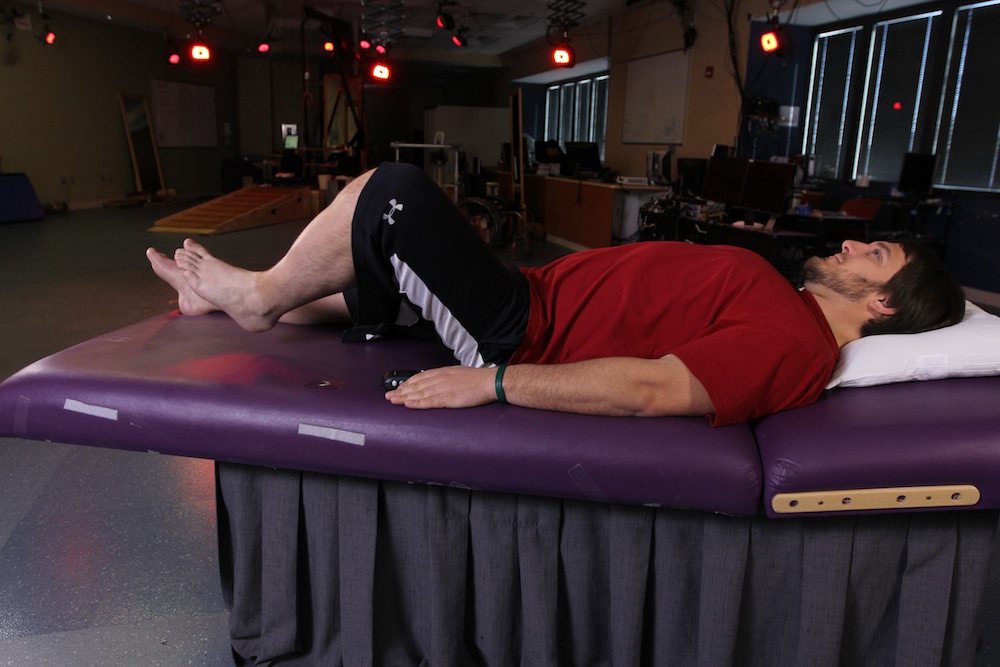Paralyzed Patients Move Again with Spinal Stimulation

For people who become paralyzed after a spinal cord injury, the condition is usually permanent, but a new study suggests that zapping the spine with electricity during physical training could help paralyzed patients regain movement.
Researchers applied electrical stimulation to the spines of four people who had been paralyzed for more than two years. All four patients were able to flex their toes, ankles and knees again, and their movements improved further with physical rehabilitation, the research showed.
If proven effective in more people, the stimulation therapy could ultimately change the prognosis for people living with paralysis, researchers say. [The 7 Biggest Mysteries of the Human Body]
"Spinal cord injury may no longer mean a lifelong sentence of complete paralysis," said Dr. Roderic Pettigrew, a director at the National Institutes of Health (NIH) in Bethesda, Md., which funded the research.
"To my personal knowledge, I think this is the first report of four such individuals that have gained such substantial improvement, more two years after injury," Pettigrew told Live Science.
Electrical healing
Patients with a complete spinal cord injury lack the ability to control any muscles below the injury.
Sign up for the Live Science daily newsletter now
Get the world’s most fascinating discoveries delivered straight to your inbox.
In 2009, Claudia Angeli, a researcher at the University of Louisville's Kentucky Spinal Cord Injury Research Center, and colleagues used electrical stimulation to treat a patient named Rob Summers, a young man who was paralyzed below his chest.
Summers had a grid of electrodes implanted in his spinal cord, and practiced standing or walking in a harness on a treadmill with spine stimulation daily for seven months. He regained the ability to move his legs voluntarily, and could stand without assistance for minutes at a time while the stimulator was on. In addition, he regained bladder and bowel control, and sexual function.
But Angeli and her team said Summers’ recovery may have relied on residual connections in sensory spinal nerves, because Summers still had sensation below the level of his injury.
Now, the researchers have shown that three more male patients with spinal cord injury regained voluntary movement after undergoing the spinal stimulation with physical training. Remarkably, two of the patients had suffered complete motor and sensory paralysis, in other words, their injuries severed all connections that relay both sensation from the legs to the brain, and commands from the brain to move the legs.
The findings were detailed online today (April 8) in the journal Brain.
One small step for men
Just as in Summers’ treatment, the researchers implanted the other patients with electrode stimulators, and had them do physical training.
The first patient they tested initially had no movement or sensation below his injury, but regained the ability to move his legs again within the first week of stimulation. The next two patients undergoing the treatment regained control of leg movement as well.
For example, the patients attempted to synchronize their leg, ankle and toe movements with a rising and falling wave on a computer screen, or flex their leg with a particular amount of force when they heard a change in sound.
After training, all four patients were able to sync their leg movements in response to the wave, and three of the four could modify the force of their leg movements in response to the sounds.
The researchers had the patients train with spinal stimulation while they were on a treadmill, practicing standing, or performing movements while lying down.
By the end of training, some of the patients could control their movements with more force and less stimulation, while others were able to move more accurately, the researchers reported.
The new therapy may work by strengthening some residual connections in the spine, but the exact mechanism isn't known. It’s not clear whether the regained muscle control is due to the training or a built-up effect of stimulating the spine, but the researchers said they plan to look at this in future studies.
Scientists are also developing a non-implantable version of the electrical stimulator that could stimulate the spine through a patient's skin.
The stimulation therapy will need to be tested in more patients before it can become a standard treatment for people with spinal cord injuries, researchers said. They still need to understand how it works, and for which patients the treatment will be effective.
Editor's Note: This arcticle was updated at 11:58 a.m. ET April 8, to clarify the role of Dr. Pettigrew's institution, the NIH, in funding the research.
Follow Tanya Lewis on Twitter and Google+. Follow us @livescience, Facebook & Google+. Original article on Live Science.










